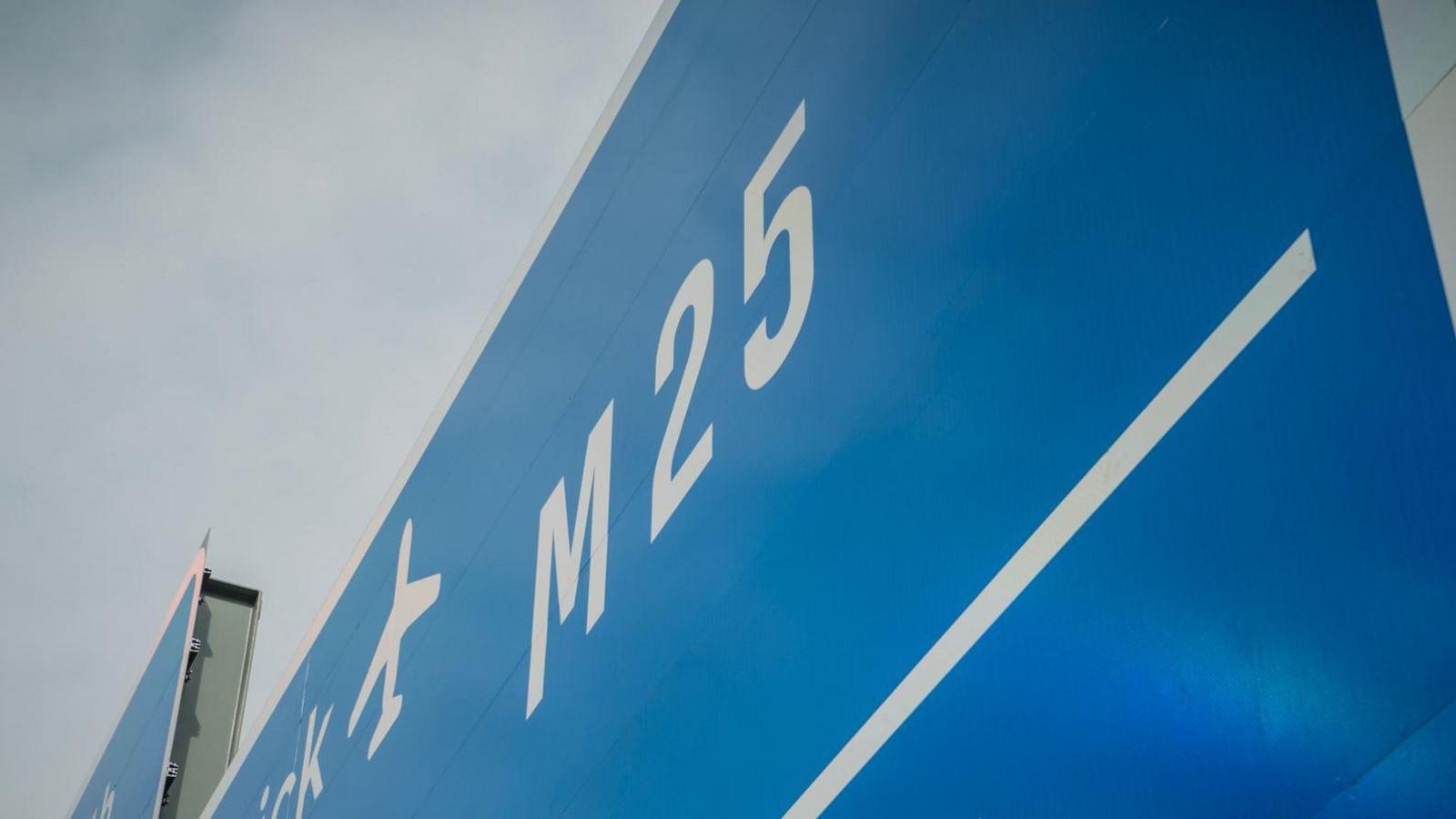Fatal M25 crash 'terrifying' for driver - coroner

Lisa Bowen, 48, was travelling clockwise on the M25 in January 2022 when she crashed
- Published
A woman who died in a crash on the M25 in a "terrifying situation" was unable to stop in time as an anti-locking system reduced her car's braking effect, a coroner has said.
Lisa Bowen, 48, was travelling on the motorway in January 2022 when her rear offside tyre deflated and detached from the wheel, before she crashed into a stationary lorry on the hard shoulder.
At an inquest into her death in Woking, coroner Richard Travers concluded that Ms Bowen died instantaneously.
She had steered her Toyota Corolla to the hard shoulder between junction eight (Reigate) and nine (Leatherhead), having driven "for at least a few minutes after the tyre deflated", Mr Travers said.
He said a tyre warning light probably did illuminate, but that it was not possible to say whether Ms Bowen saw or acted on it.
A lorry had pulled onto the hard shoulder due to a tyre issue and the driver heard a "quite a loud bang and felt something hit the back of the lorry", Mr Travers said.
Upon running to the rear, the lorry driver saw a car wedged under it and called 999, but resuscitation efforts were unsuccessful and Ms Bowen was pronounced dead at the scene.
'Ran out of time'
While Ms Bowen may have been able to avoid the lorry, the coroner said: "Without doubt, this would have been a terrifying situation and, I find, it is likely that Ms Bowen simply ran out of time to consider and to take the alternative avoiding action which was available."
His conclusion stated that if the brakes had worked effectively, there would have been sufficient time and distance for the car to have stopped before hitting the lorry.
"The brakes did not work effectively because when the brake pedal was pressed, the vehicle's anti-locking braking system was activated, and it operated to prevent instability, but, thereby reduced the braking effect almost entirely," he said.
He added that this was an "unintended effect of the system's design" which arose because the specific scenario, of a tyre detaching while the vehicle was being driven, had not been considered as part of the design.
A Toyota spokesperson said: "The senior coroner's investigation is ongoing and we will continue to cooperate with the process."
An eye witness previously told the inquest that he saw Ms Bowen's brake lights come on, but the car did not seem to slow down.
Mr Travers added: "Once on the hard shoulder, she pressed the brake pedal, with increasing force, on a further five occasions, but this did not result in any significant reduction in the Toyota's speed."
In consequence, the vehicle did not stop before hitting and under-running the stationary lorry, travelling at a speed of 37.9mph, he said.
The crash happened at 07:58 GMT on 11 January 2022 – 17 seconds after the tyre detached and 10 seconds after the car moved on to the hard shoulder, the inquest was told.
Mr Travers added that expert evidence heard during the inquest said the underrun protection bar, which should prevent cars going under it, was "nowhere near strong enough to prevent a collision of this force, or even to reduce the extent of the vehicle underrun".
Though bolts used by a separate company to fix the bar were "of a lower grade and strength than was required", Mr Travers said it was clear that the bar would not have been strong enough "even if bolts of the correct strength had been used".
Scania, which made the lorry, has been approached for comment.
Follow BBC Surrey on Facebook, external, on X, external, and on Instagram, external. Send your story ideas to southeasttoday@bbc.co.uk, external or WhatsApp us on 08081 002250.